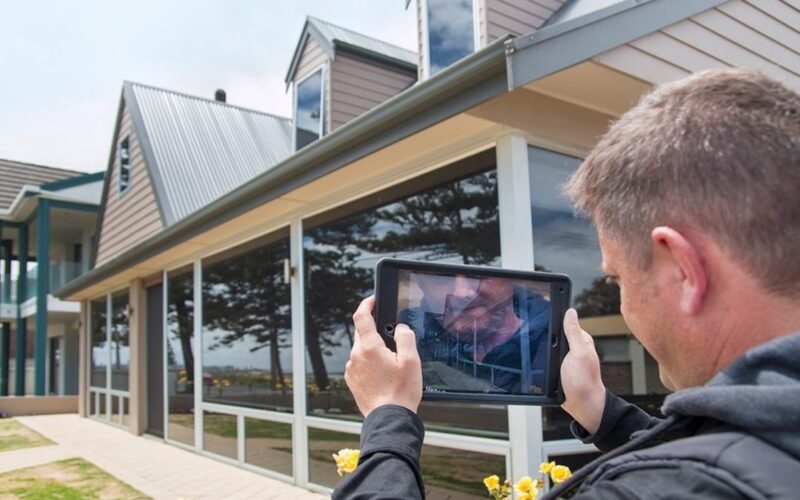Virtual inspection is the next wave of construction progress monitoring. It is an established and critical tool in large-scale commercial construction, where 360-degree cameras and 3D visualization software have been used for years.
Virtual inspections have demonstrated incredible utility in keeping projects on track and typically deliver the following benefits:
- Faster, cheaper progress monitoring: It is typically cost-prohibitive to send a third party to a job site very often. Most inspections cost anywhere from $100 to thousands, depending on the scope of the project. Additionally, getting someone to the site involves scheduling and can be a distraction for the project manager or workers. By relying on existing site personnel, it is possible to get more frequent updates on progress and catch problems before they get out of hand. Many large sites do daily or weekly progress checks.
- Full visual documentation for legal, insurance, and maintenance purposes: Virtual inspections create a long-term archive of everything that went into the build. If you need to produce documentation for legal or insurance purposes, you now have a high-fidelity visual record of everything. And if you need to repair or extend a building once built, you now know what’s behind the walls and under the ground.
However, virtual inspections have historically been the province of commercial job sites for three big reasons:
- The 360-degree cameras used are expensive, fragile, and require training for a project manager or foreman to operate. They are also easily lost.
- A person on-site must typically follow a path or overlay the images they are collecting on a 2D or 3D floor plan. This is a time-consuming process that interrupts the project manager or foreman’s work and adds labor cost to the inspection. Many cameras only have an 8-foot effective range for taking quality images, so large swaths of the building may not be captured accurately.
- The data is massive. Many virtual inspection technologies don’t work offline because the files they create take a lot of space to store and time to transmit to the cloud. Because of this, WiFi access points are usually needed at the job site.
A new iteration for residential construction:
The next evolution of virtual inspection technology is entirely mobile and takes advantage of the increasingly amazing hardware that’s in everyone’s pocket. A few years ago, phones weren’t up to the task for high-fidelity virtual inspections, but now they are:
- Camera resolution: The smartphone companies are in a never-ending race to deliver high-resolution images that, when blown up, would be the equivalent of 3 to 4 foot wide prints. With good resolution, it’s easy to get into the fine details of a job site and catch details that an on-site inspector might miss.
- Image stabilization: Modern phones have sophisticated stabilization technologies for both photos and videos that produce relatively blur-free images.
- Image cleanup: The right software can automatically optimize video and photo on the phone and in the cloud to account for poor lighting, out-of-focus areas, and more.
- Image AI: Phones now have the horsepower to analyze images and video as it’s being captured. This AI can look for problems (like subtle water leaks) that even a trained human eye might miss.
- Storage: Modern devices have massive amounts of storage for collecting 100-2,000 images and videos of the site without having to worry about running out of space.
- Compression and transmission: Another benefit of phone horsepower is better and smarter compression for optimizing video and image file sizes during virtual inspection. And it’s now much easier to intelligently determine when the right time to send the data to the cloud is—to optimize phone battery life and ensure data will get synced fully.
- Sensor data and AR: Phones are equipped with an array of sensors and Augmented Reality (AR) tools to share GPS location, height, altitude, movement speed, and more. All of this can be used to position the phone’s user in 3D space without them having to plot where on the parcel a photo or video was taken.
Modern virtual inspection technologies also often incorporate computer vision to assist the remote reviewer in understanding what they are looking at. Computer vision can look for problems as well as identify objects in scenes and even look up their cost.
If you’d like to learn more about virtual inspections, reach out to us.

